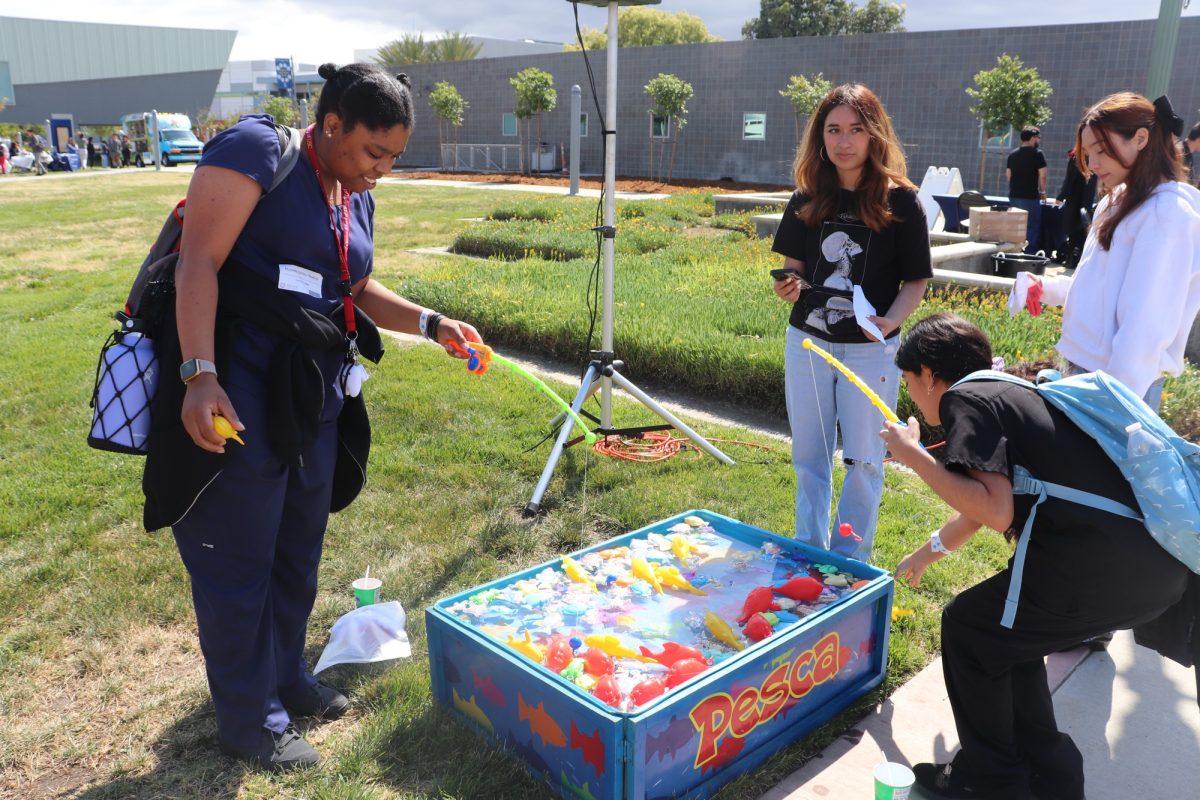Students across campus will encounter as many types of cars in the parking lot as faces across the campus. From luxury cars to off roading trucks, all kinds of cars can be seen across campus. People have grown closer to their cars and trucks. No longer is it just buying and selling, it’s creating.
Now owning a car has become a hobby. It is not only essential but it shows a person’s personality and behavior.
All across campus cars have been mutilated to fit their owners ideas, looks, ideology, personality, and temperament.
why buy?
Numerous studies have been done on why people own certain types of cars, but commuting is the number one reason for owning a vehicle.
Kevin Mofid, a 24 year-old part time math instructor at Cerritos College, bought his Toyota because of its stamina.
“Toyota’s are reliable,” he said.
“My parents always drove Toyota’s. I’m a teacher , I have to commute from one college to another and I can’t have my car breaking down.”
The style of a car is also an important factor for potential car buyers.
Studies show that young men are more prone to buying sports cars because companies manufacture cars to mimic the curves of a woman.
Color too plays an important role.
According to ColorMatters.com, red, the color that defines stop and emergencies,is the most popular color of cars.
Mofid was practical about choosing the color of his car.
“My favorite color is black but you have to wash it every other day,” he said.
customization
Side skirts, rims, sway bars, and handles.
To individualize themselves youngsters have started to customize their vehicles.
Edgar Loudato, a Cerritos College student, is of those youngsters.
One day when Loudato returned home, his parents surprised him with a brand new 2001 Honda Civic. Two years later, when he graduated high school and acquired a job, he began his customization.
A whole body kit, eighteen inch rims, dual exhaust, lighting/strobes, spoilers, radio, stereo system, lowered springs, shocks, strut bars, and sway bars were all added to the car over the course of two years at a cost of 5 grand.
Loudato, a fanatic about cars, installed the parts himself. “Its nice when people mess around with cars, he said. Fixing up cars is an expensive habit but its fun to do.”
Loudato plans to own his car for the rest of his life. ” I will just keep changing and adding parts to it like an art project.
“It’s funny, you buy one thing and you’re never satisfied, you always want something new.”
Mark Britton, a student in the General Motors A.S.E.P program also owns a customized car.
Britton bought his ’91 yellow Toyota pickup in ’99 because his previous car, a ’76 blazer, used up too much gas.
Since 1999 Britton has lowered his car three inches, added a tachometer, exhaust, low profile tires with 16 inch rims, interior seats, and changed the cluster colors.
He also plans to add a new motor with racing heads, valve springs, rocker arms,cams, air-bags, 18 inch rims,and air-bags (hydraulics) all at an estimated value of $10,000.
Britton is pleased that his car
not only looks good but gets good gas mileage. “That is
so uncommon,” he said.
He estimates his Toyota gives an average of 300 to 400 miles on a full 13 gallon tank.
Britton plans to put this pickup in car shows after the art work on his car is complete.
Problems with cars
Humans have created too much pollution through cars and trucks, especially the Western part of the world.
As the world evolves it seems the internal combustion engine would die out and give way to a newer, more efficient method of transportation.
Protests take place in crowded cities against cars and the pollution they create not only gas pollution but noise pollution and space requirements.
But will the combustion engine really die out?
Mazda’s RX-7 featured a Rotary Engine that researchers at the University of California at Berkeley have copied and constructed into the worlds smallest internal combustion engine. The engine weighs a fraction of a battery and is big as a U.S. penny. It pumps out four watts of power when fueled by hydrogen.
Researchers also hope to pump out 30 watts of power in coming months to power most










